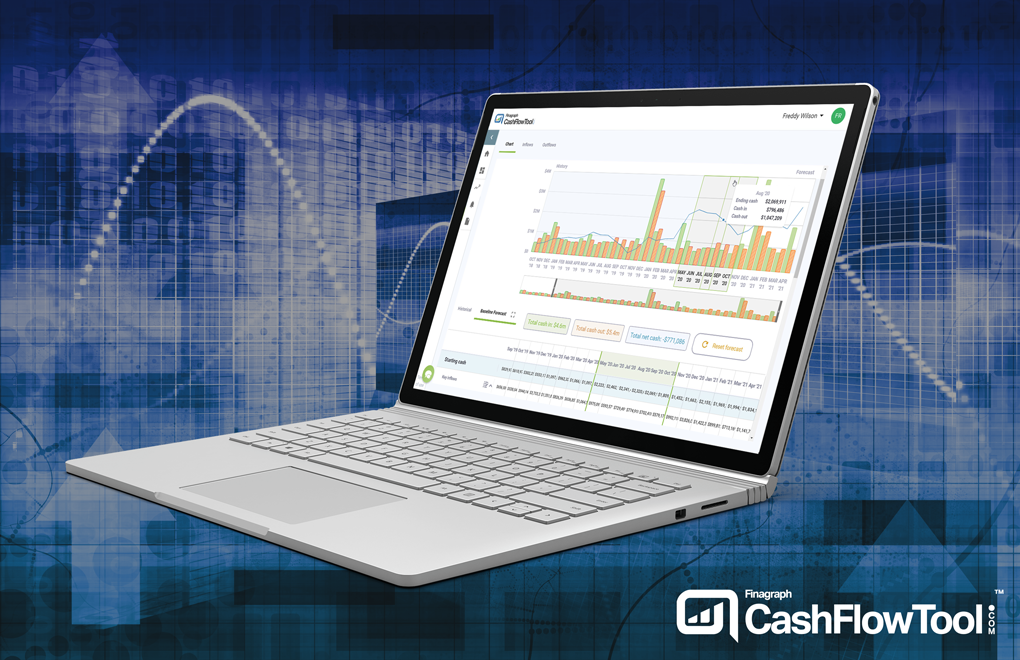Cash Flow Fundamentals
Understand cash flow to make better decisions.
How does a cash flow forecast can help a business?
Cash flow forecasting helps business owners make informed decisions by understanding their financial viability based on their future cash balance. A cash flow forecast predicts cash inflows and cash outflows of a business for a future time period. Cash flow forecasts help identify potential shortfalls or surpluses in cash to help in planning and decision making.

What does cash flow mean to a business?
Cash flow is the amount of money coming in and out of a company and represents the change in a company’s cash balance from one period to another. It is positive if the closing balance is higher than opening balance.
How can cash flow affect a business?
Cash flow is the lifeblood of every business. If cash flow is positive, it creates new opportunities and options to invest the extra cash in growth and new initiatives. If cash flow is negative, a business’ opportunities and options become limited over time, as business survival can become the sole focus.
How can cash flow help a business?
Positive cash flow creates new opportunities and options for a business. For example, a business can use it to invest the extra cash in growth or new initiatives, pay down debt, or distribute cash to the business’ owners.
Why is cash flow important for small businesses?
Cash flow is important for small businesses because it represents money coming in and out of a business. It is the lifeblood of every business, as it determines financial health and affects a business’ ability to invest in growth and other initiatives.

Are cash flow and profit the same thing?
No, profit and cash flow are not the same thing!
Profit (aka net income) represents revenue less expenses during a period of time. Cash flow is the amount of money coming in and out of a company and represents the change in a company’s cash balance from one period to another.
When you earn revenue, this is not always received in cash immediately (i.e., many companies send invoices after work is performed that are due in 30 days). Similarly, when you incur an expense, this is not always paid in cash immediately.
How is cash flow calculated?

Cash flow is calculated as cash inflows (incoming cash) less cash outflows (outgoing cash) during a specific time period.
On a company’s cash flow statement, this is broken out into three categories:
- Cash inflows/outflows from Operating Activities
- Cash inflows/outflows from Financing Activities
- Cash inflows/outflows from Investing Activities
How can cash flow be improved?
There are many strategies and tactics to improve cash flow, but most fall into two categories:
- Adjust amounts - Increase the amount of inflows or decrease the outflows. This can be done by increasing your prices or sales volume to increase cash inflows, or decreases your expenses to decrease cash outflows.
- Adjust speed - Increase the speed your collect cash from customers and decrease the speed you pay your suppliers. For customers, you can increase your cash collection speed by adjusting payments terms (i.e., from 30 days to 15 days), accepting credit cards, offering discounts for early payments, requiring prepayments, and other methods. For suppliers, you can decrease your cash payment speed by negotiating new payments terms (i.e., from 30 days to 45 days), paying bills right before the due date, and other methods.
Whichever strategy or tactics you choose, it is important to keep accurate records of cash inflows and outflows over time in your accounting system (i.e., QuickBooks) so you can use the data to make informed decisions moving forward.
Why is cash flow an important tool for analysis?
Cash flow helps your business know future potential cash shortfalls in cash flow and possibly cash surpluses. Understanding your future cash position gives business owners a cash roadmap so they can plan future scenarios such as when to hire, when they can expand, or if they need to cut expenses to make payroll. Having a cash flow forecasting tool makes this overall analysis simple, yet powerful.
What is cash flow management?
Cash flow management is a process of tracking the amount of money coming into and out of a company over a period of time to help make informed business decisions.
How does a business generate a cash flow forecast?

A business can generate a cash flow forecast by performing the following, typically done in Microsoft Excel in a template like this one:
- Take the starting cash balance from the business’ balance sheet
- Create sections for cash inflows (incoming cash) and cash outflows (outgoing cash)
- Insert open invoices from accounts receivable in the cash inflow section and enter estimated payment dates
- Insert unpaid bills from accounts payable in the cash outflow section and enter estimated payment dates
- Insert any other expected cash inflows or cash outflows
- Insert formulas into the Excel template to calculate ending cash: starting cash balance + cash inflows – cash outflows = ending cash balance.
You may also use other cash flow software, such as CashFlowTool, which automatically pulls in all data from QuickBooks and produces a cash flow forecast in seconds.